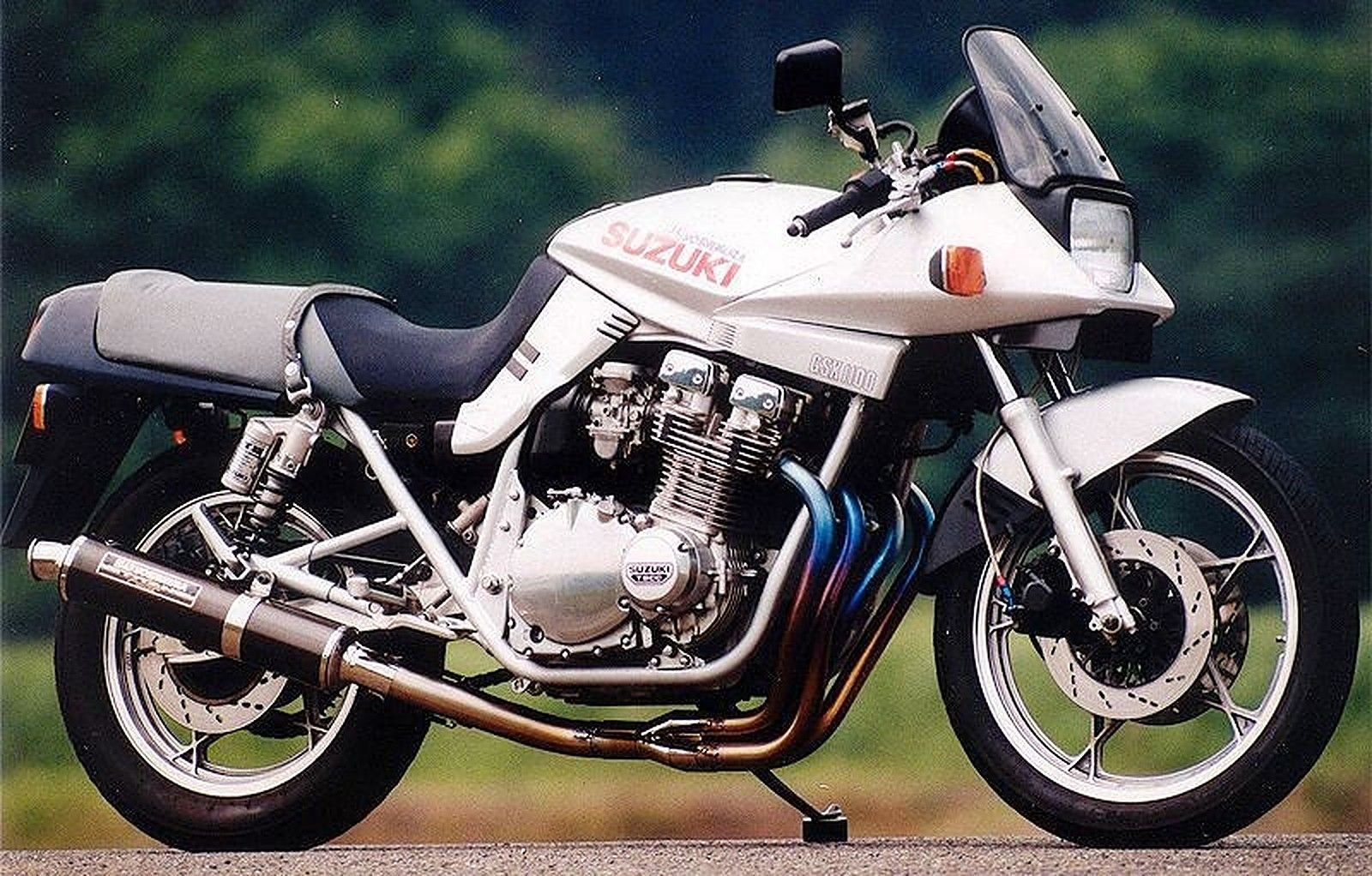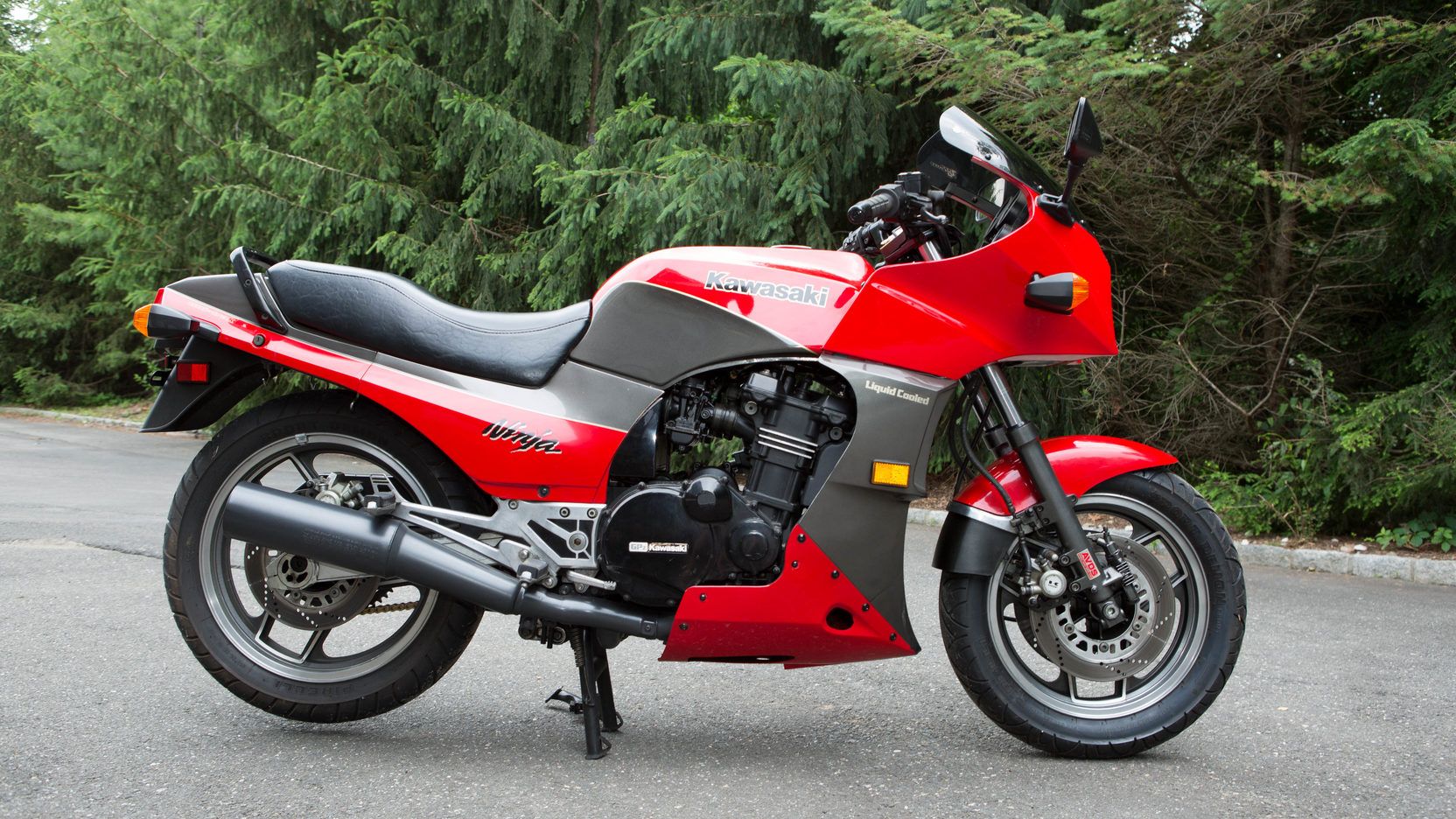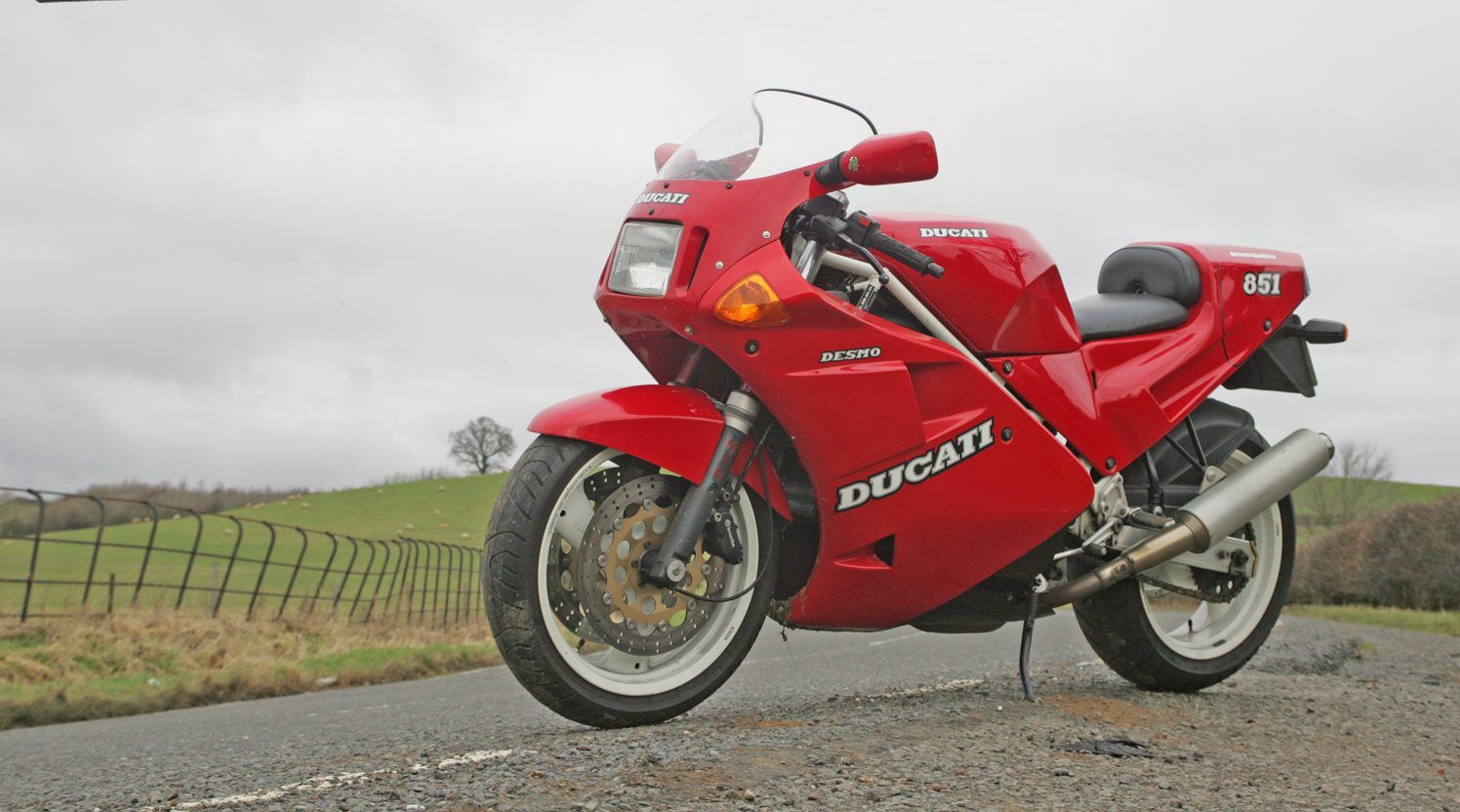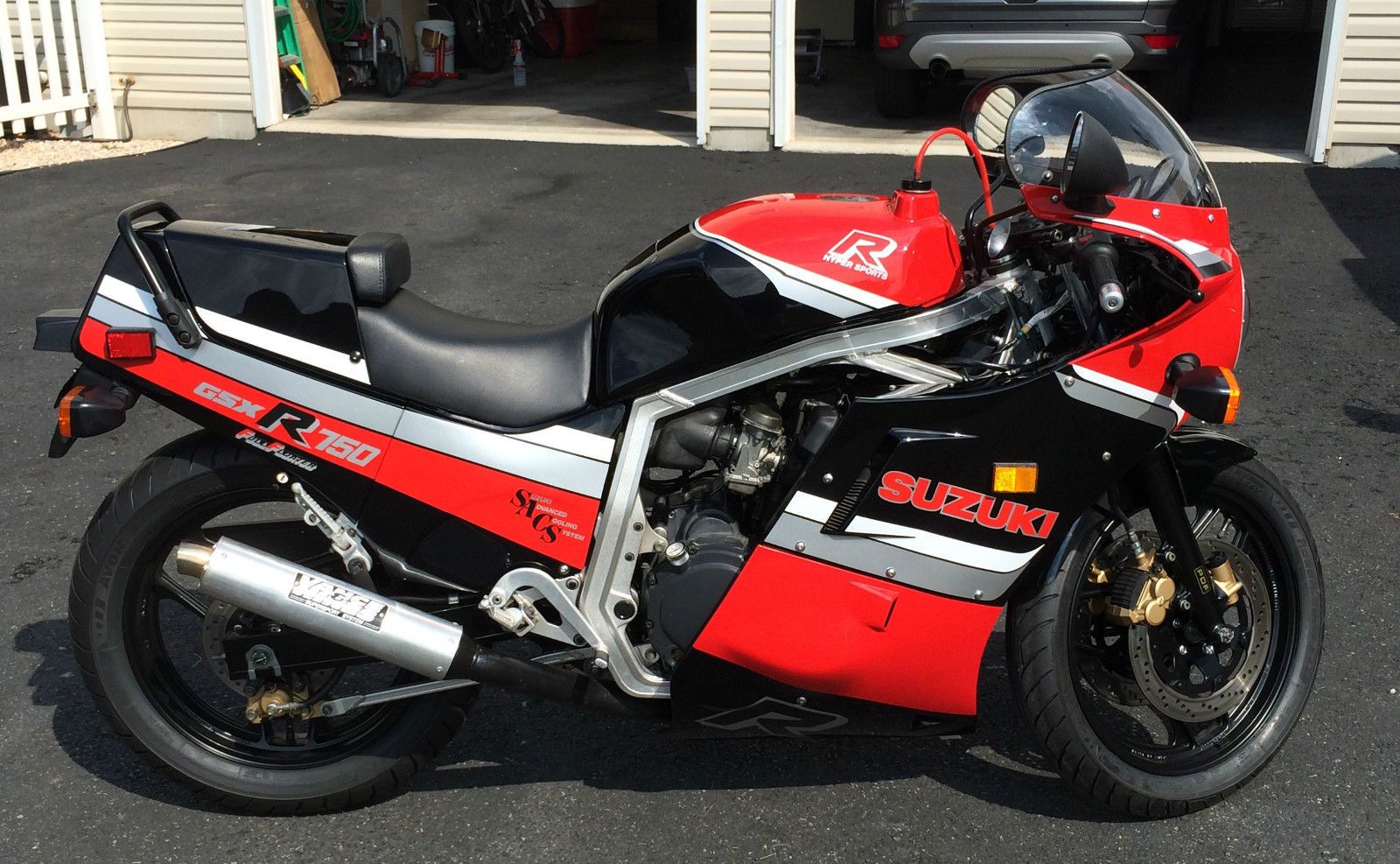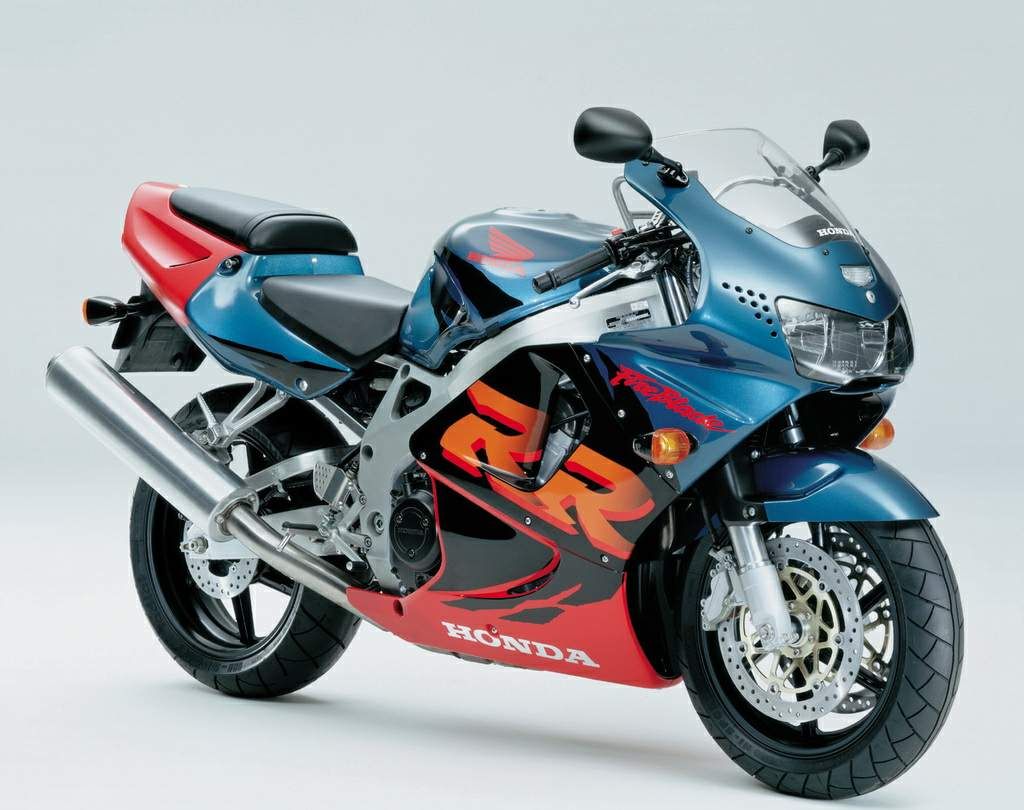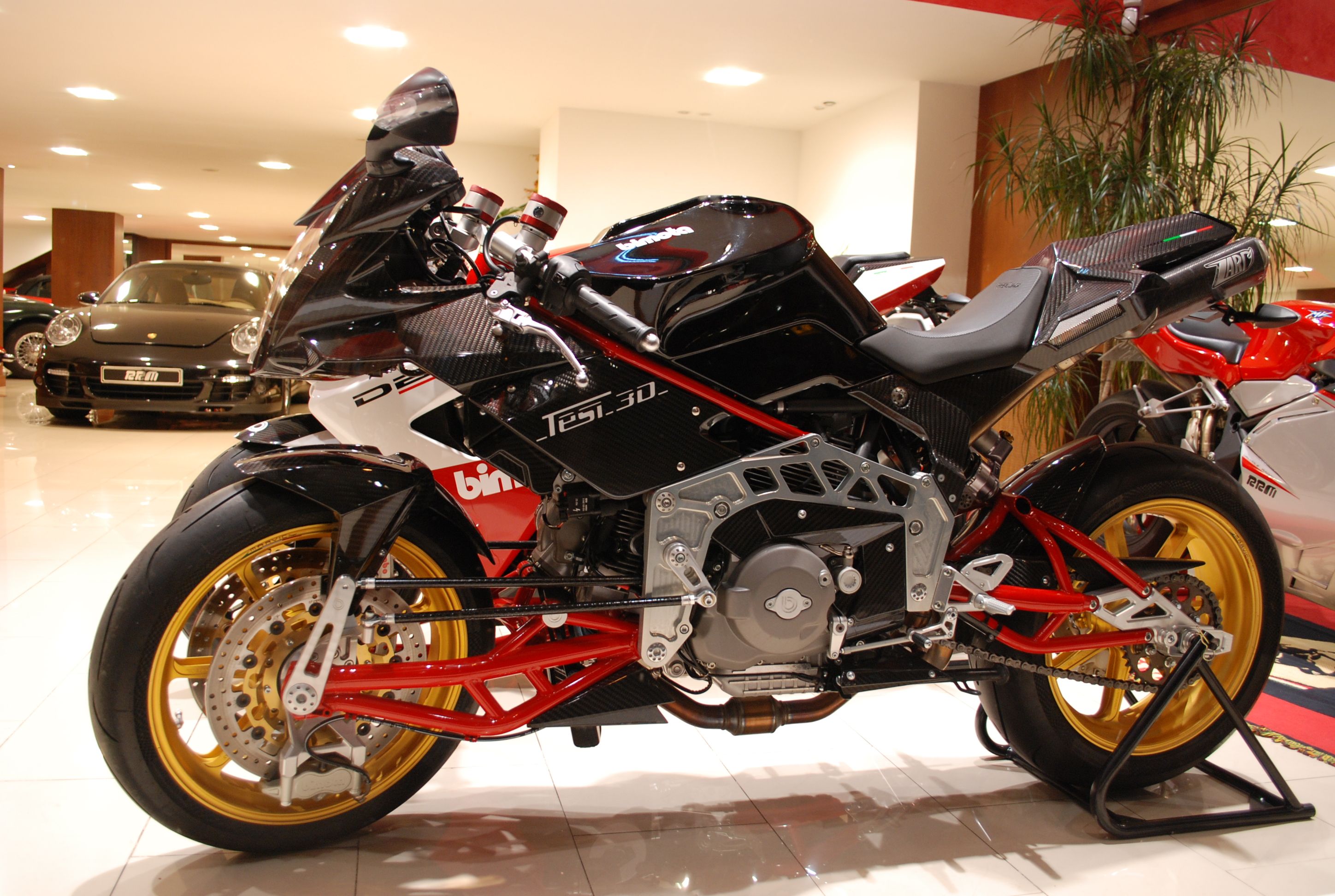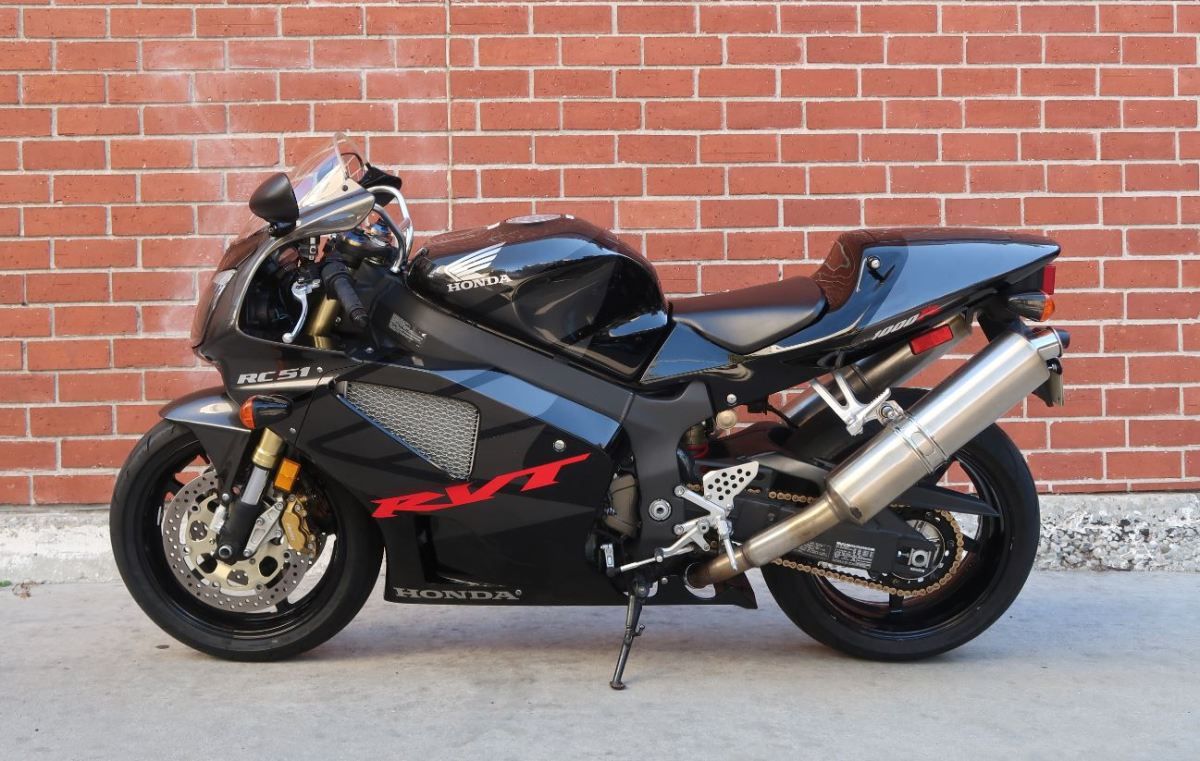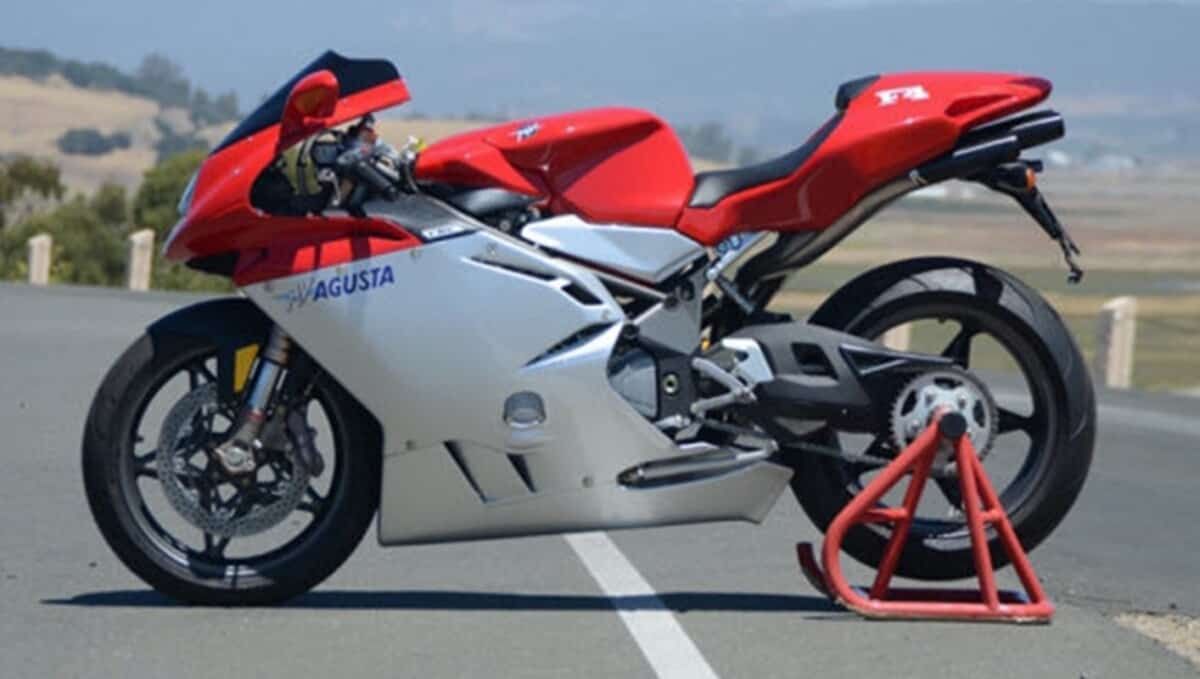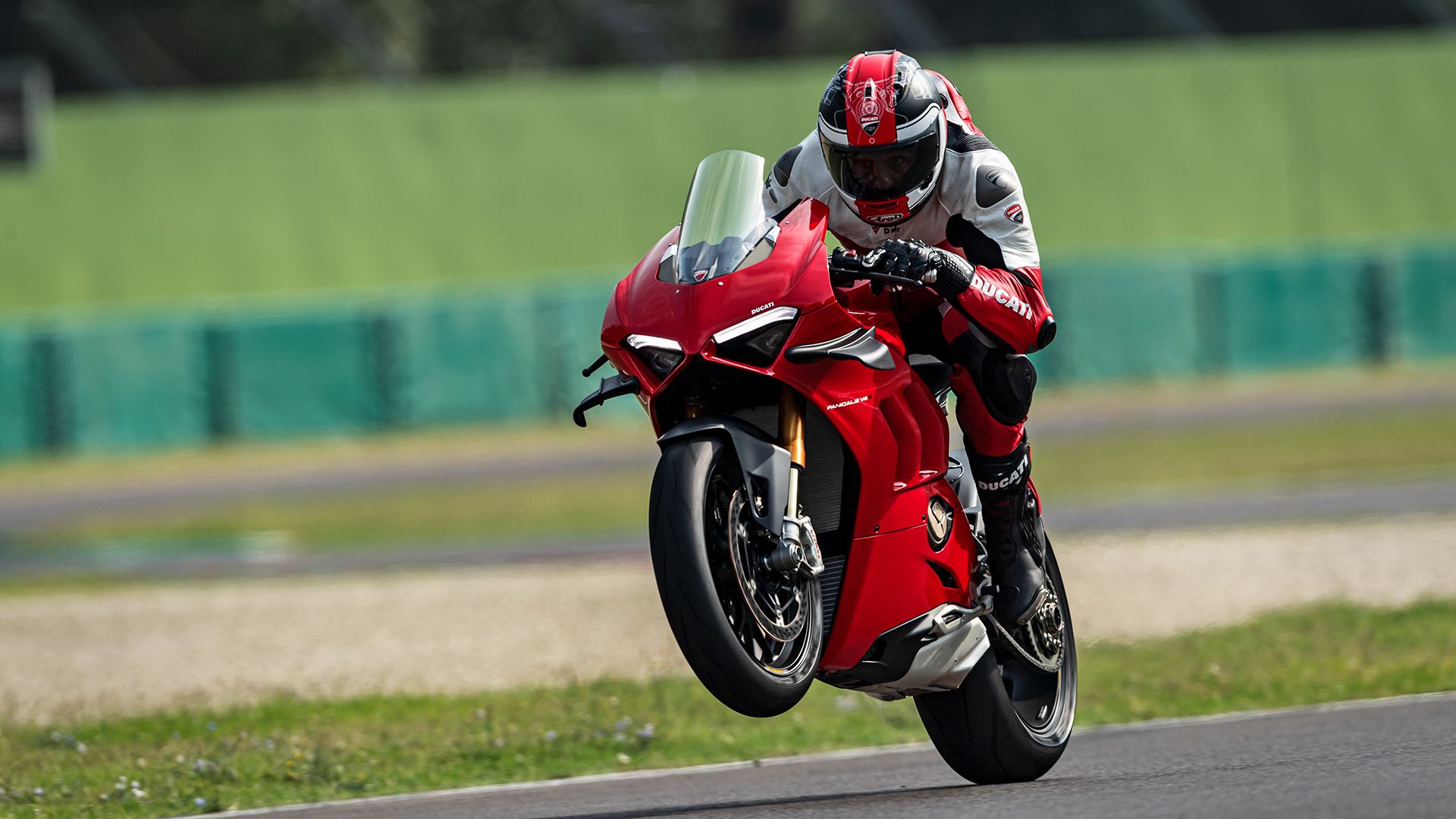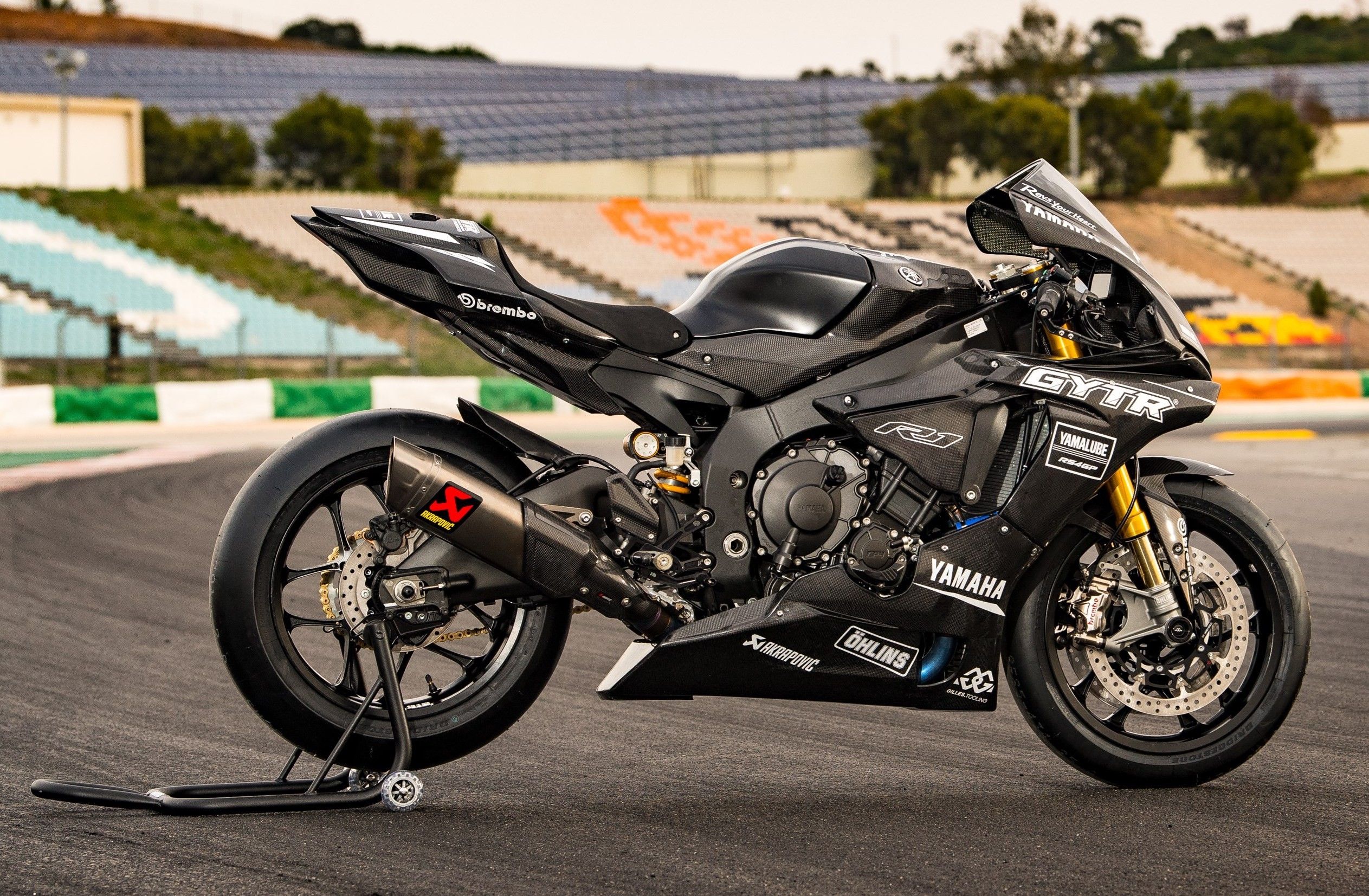Each of these bikes played a major role in upping the game in competition and street riding. Each year and subsequent series these models and their progeny improved manufacturing processes, quality, durability, and lap times.
It wasn't until the last 10 years of electric racebikes that any more significant changes were made to these track derived bikes that were also sold on the street. From the Isle of Man, Ama Supersport to World Superbike, and even drag racing these things have taken trophies every year since their inception.
10 1981 Suzuki GSX Katana S 1100/1000/750
This was the beginning of true high-powered faired sportbikes for the masses. Interestingly, the bike was designed and sold in Germany, then Japan, and then the rest of the world in that order. It made almost 100 H.P. as the 1100, and the engine held drag race records for years.
The "X" model never sold in the USA, it was tested elsewhere. In the USA we got the equally beautiful naked version, which did have cast aluminum lower and more conventional controls and footpegs mounted to the same frame, not welded like the rear set"X" model shown here. A cool derivative of the bike had a fold away headlamp in certain markets.
9 1984 Kawasaki ZXR900 Ninja
This was the first attempt at a lightweight open class Sportbike and its derivatives stayed in the inventory as 600s and touring bikes for 20 years. After the 1988 revision, the original 900 got resized and revised every two years as the sportbike battle raged on.
Unlike earlier sportbikes, this was a modern multi-valve liquid-cooled engine that revved very high and it was among the first to have the small 16" wheel in front to aid quick turning while underway.
8 Ducati 851
This was Ducati's first truly winning street and strip bikes. It used their first fully modern liquid-cooled multi-valve engines and was significantly lighter and more powerful than any model it sold before. The odd displacement was due to rules that allowed V-Twins to have a larger displacement than 750-4s of the era while competing in road racing.
It was the first street bike to run a dry clutch in a performance bike. This series won many races and started a trend that lasted 20 years for domination in various events.
7 1984 Suzuki GSXR 750
This was among the lightest and admittedly the ugliest street bikes ever sold in the sporting class. Even by the standards of today, it's still a modern bike. The weight of this thing was well under 500 lbs, and the 1100 which showed up half a year later wasn't much heavier as it was built on the same frame.
The actual frame on the early series was as much cast as it was welded extrusions, and the engine was air/oil-cooled allowing the first 12 years of the bike to save weight until higher power demanded water cooling in later versions. This moved the weight target for sportbikes under the 500 LB. mark where they had weighed over 600 in earlier versions. Claimed weight was an amazing 430 LBS.
6 Honda CBR900RR Fireblade
Building upon the already very successful CBR600F1, the same year Honda doubled down and cut the weight on the series with an aluminum-framed 10second open class bike that set records starting in 1990. The competitor models were already getting larger and heavier Honda went after cutting the weight down to 750 levels on their literbike.
The bike sold in high numbers and won races galore for years. The bike actually caught operators off guard because it was so easy to turn and felt like a 500 to many cyclists.
5 Bimota Tesi
This was the first series of street driven cycles that did away with front forks altogether. We put up the latest version because it is a work of art, but the original was plainer with mostly cast and extruded steering parts.
The thing that made the series noteworthy was that operators could late brake into corners with little to no dive and weight shifting compared to a conventional or even an inverted fork set-up. Most of the Tesi series used Ducati V-Twins tuned for around 90-100 H.P. by using the older Air-Cooled series. Some of these bikes had a claimed dry weight of only 385LBS.
4 Honda RVT-RC51 1000
Honda wanted a racebike that would run with liter-class Ducatis in road racing, so they built their own V-Twin racing series starting with the RC45, but the later RC51 got it right. Power was around 130+ H.P for the street homologation models and racers could make 160+.
Because it was lightweight and the radiators were split and two and mounted inside the air slipstream the bike had very high speeds in the straights of the track. It was very successful and made up for the horrible losses in racing by the experimental NR 750 series.
3 MV Agusta 750 F4
This was the bike that took MV Agusta from a quirky niche' marque that built impractical bikes for the rich to a brand that could build race winners. It sold well because it made liter-class power from a lightweight 750.
It was among the first to have an underseat exhaust to move weight inboard for easier control when cornering. Power was claimed to be in the neighborhood of around 145 +/-. Oddly enough the bike sold so well that the parent company Harley-Davidson sold the manufacturer two years after its best sales.
2 Ducati V4 Panigale S
Ducati: making mechanics out of motorcyclists for over 60 years! That's a common joke referring to their extreme complexity and no-compromise performance. This bike makes around an honest 200 H.P. and only Kawasaki's supercharged H2R comes close.
The weight of this bike is well under 460 LBS dry and nothing can touch the bike in road racing as far as Superbike competition. Because all the weight is low and tight, it's an easy bike to drive fast and it's as forgiving as a V-twin model in terms of balance. Insanely fast and not for amateurs.
1 Yamaha YZF R1
Yamaha was mostly known as being the trendsetter in watersports and a follower/maker of great bikes in each class. However, the R1 and the R6 were very well-developed bikes. Basically, these models took the best developments of the other Japanese brands and improved them. Most R1s could make over 145 H.P. and power. The newest version, interestingly enough, uses a cross-plane crank on an inline 4. Power is said to be in the 180 H.P. range.
The series started life as the fabled FZR1000 5 valve engine, but around the era when they did away with the extra intake valve, they changed the designation to YZF in the series. The FZR/YZF were the first 4 cycle street bikes to use a servo tuned exhaust for broadening power band.


